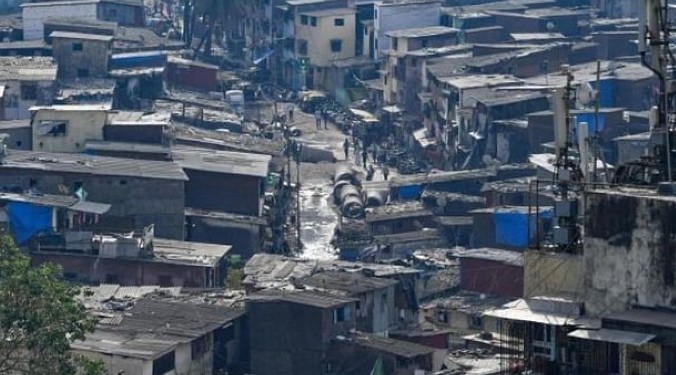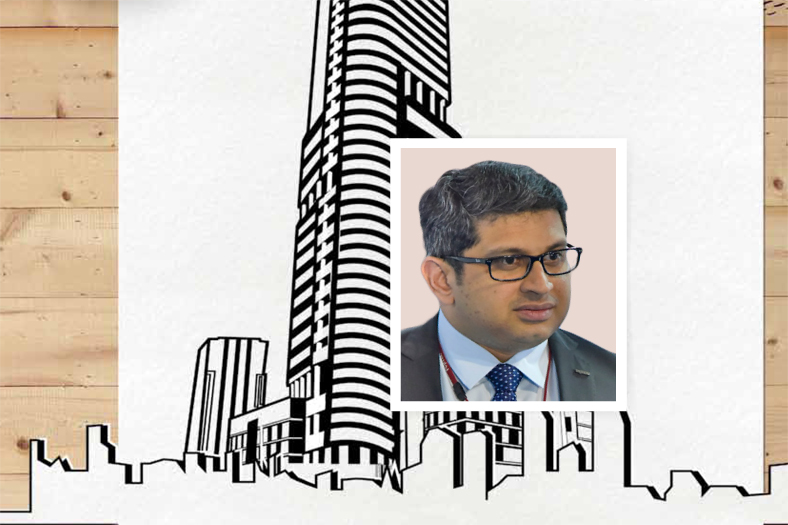FACADES: Evolving Market Trends Across India [Mar 2012]
Facades and cladding industry in India has gone through sea change in past decade, however it is yet to achieve the due importance it deserves. Madhur Daga, Executive Director, Orient Ceramics and Industries feels the onus of taking this industry to new heights lies on architects who plan buildings
For long, architecture and designing of a house use to be concentrated to the interiors of that house only. The color combination, the new trends in tiling, and the articulation everything was restricted to the interiors only. For exteriors and facades, once you have selected the color and applied it on walls, you are done with it. But, today the scenario has changed drastically. The facades and the exteriors of a building also get due attention, though they are yet to achieve the exalted status and keen attention they deserve. But does a normal person who is going for renovation of his house or going to construct a new house really know what facades are? Is he really cared about the exterior of his house or does he know better managed facades can really keep his house protected from sunrays and rain water?
So let’s understand facades first. Facade means the face of a building. It includes the outer walls, the open balcony, the portico and the open terrace. Now, it has extended to the lawn area with seating arrangements also. These days the importance of facades has increased more as more and more people today have shown interest in having an impressive outer look of their building. As the outer design of a building gives the first impression about the interiors, it also tells about the personality of family living inside.
After talking about the aesthetic importance of facades, let’s talk about the technical benefits a well managed façade brings to a building. Every building needs protection from sunrays, rain water and other tribulations like seepage, algae and fungus. These evils weaken the walls and thereby cut-short the life of a building. A well planned façade restricts all these troubles from touching the wall and acts like a protecting shield to the building. These days, many developers and architects innovatively plan the facades to keep the building thermo-static, thereby reducing the green house effect and also restricting intensive use of AC. Many people now install solar panels on their roof or balcony as an alternative source of power for their house. Here also, a pre-planned facades and cladding helps a lot.
Well, there are many ways in which cladding of façades can be done. There is aluminum panels used in covering walls, and then there are UV protected glass panels used in cladding. But with ecologically sustainable development being the most important guideline in residential and commercial buildings, developers are now looking towards comparatively more eco-friendly building materials and ceramic tiles comes out as a better option to them. Ceramic tiles, since ages, have been used as claddings material for facades. Though with improvement in technologies, ceramic tiles are now considered more sophisticated cladding material with great class of aesthetic appeal. Today ceramic tiles have graduated from the old days of clay roof coverings; they are now available with hundreds of qualities. For cladding and facades there are non-pores, scratch proof ultra-vitrified tiles available in the market. Architects who deal with ceramic tiles have come up with many innovative methods where it can be used for claddings. One innovative method which is gaining importance these days is Chambered Tile Facades where tiles are not put on the surface of wall; rather an air chamber is created between wall and the tile cladding. This protects building not only from rain, sunrays and chilly weather; it also regulates the temperature very efficiently and effectively. As the wall does not come in contact with atmosphere directly, problems like seepage and algae are also eliminated. Another benefit of this method of cladding is that one can change the tiles easily as and when required as per the latest trends, colors and designs. A sustainable façade system also protects the building from fire. It acts as a fire alarm and gives at least a time of two hours to vacate the building in case fire has spread inside the building.
The facades and cladding industry in India has gone through sea change in past decade and many innovative processes are gaining momentum in the market, but it is yet to achieve the due importance it deserves in India. What are the reasons which restrict the growth of this industry in our country? Is it the cost sensitiveness of Indian consumers which is confining this industry to evolve of the resistance-to-change mentality curbs the upward path? Well, the Indian consumers have really grown up today and they are least bothered about the pricing provided they get a value for money deal and when it a matter of safety and security of its family, Indian consumers are far from bargaining. Also, they are now smart enough to do a comparative analysis of the lifetime cost and benefits of any product they buy. This industry is receiving good responses in all the metros and also in few of the prominent tier-II cities like Lucknow and Pune.
Thus, the onus of taking this industry to new heights lies on the shoulders of builders and architects who plan a building. They need to make the customers understand that a sustainable façade system in a building is as important as having a proper defensive guard. The new building norms by government have come as a helping hand to them. Every family wants their house look beautiful for inside as well as outside and if the security of their building comes as a bonus along with beauty, anyone will welcome it with open hands.
8
Cookie Consent
We use cookies to personalize your experience. By continuing to visit this website you agree to our Terms & Conditions, Privacy Policy and Cookie Policy.









